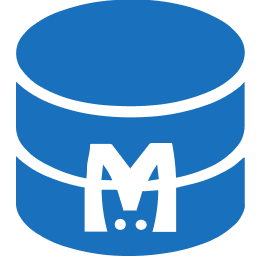New to KubeDB? Please start here.
Initializing with Script
This guide will show you how to to create database and initialize Script with MySQL Schema Manager using KubeDB Ops Manager.
Before You Begin
At first, you need to have a Kubernetes cluster, and the
kubectlcommand-line tool must be configured to communicate with your cluster. If you do not already have a cluster, you can create one by using kind.Install KubeDB in your cluster following the steps here.
Install
KubeVaultin your cluster following the steps here.You should be familiar with the following
KubeDBandKubeVaultconcepts:
To keep everything isolated, we are going to use a separate namespace called demo throughout this tutorial.
$ kubectl create ns demo namespace/demo created Note: YAML files used in this tutorial are stored in docs/guides/mysql/schema-manager/initializing-with-script/yamls directory of kubedb/doc repository.
Deploy MySQL Server and Vault Server
Here, we are going to deploy a MySQL Server by using KubeDB operator. Also, we are deploying a Vault Server using KubeVault Operator.
Deploy MySQL Server
In this section, we are going to deploy a MySQL Server. Let’s deploy it using this following yaml,
apiVersion: kubedb.com/v1 kind: MySQL metadata: name: mysql-server namespace: demo spec: version: "9.1.0" storageType: Durable storage: storageClassName: "standard" accessModes: - ReadWriteOnce resources: requests: storage: 200Mi allowedSchemas: namespaces: from: Selector selector: matchLabels: app: schemaManager deletionPolicy: WipeOut Here,
spec.versionis the name of the MySQLVersion CR. Here, we are using MySQL version9.1.0.spec.storageTypespecifies the type of storage that will be used for MySQL. It can beDurableorEphemeral. The default value of this field isDurable. IfEphemeralis used then KubeDB will create the MySQL usingEmptyDirvolume.spec.storagespecifies the StorageClass of PVC dynamically allocated to store data for this database. This storage spec will be passed to the PetSet created by KubeDB operator to run database pods. So, each members will have a pod of this storage configuration. You can specify any StorageClass available in your cluster with appropriate resource requests.spec.allowedSchemasspecifies the namespace of allowedSchema Manager.spec.deletionPolicyspecifies what KubeDB should do when a user try to delete the operation of MySQL CR. Wipeout means that the database will be deleted without restrictions. It can also be “Halt”, “Delete” and “DoNotTerminate”. Learn More about these HERE.
Let’s save this yaml configuration into mysql-server.yaml Then create the above MySQL CR
$ kubectl apply -f mysql-server.yaml mysql.kubedb.com/mysql-server created Deploy Vault Server
In this section, we are going to deploy a Vault Server. Let’s deploy it using this following yaml,
apiVersion: kubevault.com/v1alpha1 kind: VaultServer metadata: name: vault namespace: demo spec: version: 1.9.2 replicas: 1 allowedSecretEngines: namespaces: from: All secretEngines: - mysql unsealer: secretShares: 5 secretThreshold: 3 mode: kubernetesSecret: secretName: vault-keys backend: raft: path: "/vault/data" storage: storageClassName: "standard" resources: requests: storage: 1Gi authMethods: - type: kubernetes path: kubernetes terminationPolicy: WipeOut Here,
spec.versionis a required field that specifies the original version of Vault that has been used to build the docker image specified inspec.vault.imagefield.spec.replicasspecifies the number of Vault nodes to deploy. It has to be a positive number.spec.allowedSecretEnginesdefines the types of Secret Engines & the Allowed namespaces from where aSecretEnginecan be attached to theVaultServer.spec.unsealeris an optional field that specifiesUnsealerconfiguration.Unsealerhandles automatic initializing and unsealing of Vault.spec.backendis a required field that specifies the Vault backend storage configuration. KubeVault operator generates storage configuration according to thisspec.backend.spec.authMethodsis an optional field that specifies the list of auth methods to enable in Vault.spec.deletionPolicyis an optional field that gives flexibility whether to nullify(reject) the delete operation of VaultServer crd or which resources KubeVault operator should keep or delete when you delete VaultServer crd.
Let’s save this yaml configuration into vault.yaml Then create the above VaultServer CR
$ kubectl apply -f vault.yaml vaultserver.kubevault.com/vault created Create Separate Namespace For Schema Manager
In this section, we are going to create a new Namespace and we will only allow this namespace for our Schema Manager. Let’s deploy it using this following yaml,
apiVersion: v1 kind: Namespace metadata: name: demox labels: app: schemaManager Let’s save this yaml configuration into namespace.yaml Then create the above Namespace
$ kubectl apply -f namespace.yaml namespace/demox created SQL Script with ConfigMap
apiVersion: v1 kind: ConfigMap metadata: name: scripter namespace: demox data: script.sql: |- use demo_script; create table Product(Name varchar(50),Title varchar(50)); insert into Product(Name,Title) value('KubeDB','Database Management Solution'); insert into Product(Name,Title) value('Stash','Backup and Recovery Solution'); $ kubectl apply -f configmap.yaml configmap/scripter created Deploy Schema Manager Initialize with Script
Here, we are going to deploy Schema Manager with the new Namespace that we have created above. Let’s deploy it using this following yaml,
apiVersion: schema.kubedb.com/v1alpha1 kind: MySQLDatabase metadata: name: schema-script namespace: demox spec: database: serverRef: name: mysql-server namespace: demo config: name: demo_script vaultRef: name: vault namespace: demo accessPolicy: subjects: - kind: ServiceAccount name: "script-tester" namespace: "demox" defaultTTL: "5m" init: initialized: false script: scriptPath: "etc/config" configMap: name: scripter deletionPolicy: "Delete" Here,
spec.databaseis a required field specifying the database server reference and the desired database configuration.spec.vaultRefis a required field that specifies which KubeVault server to use for user management.spec.accessPolicyis a required field that specifies the access permissions like which service account or cluster user have the access and also for how long they can access through it.spec.initis an optional field, containing the information of a script or a snapshot using which the database should be initialized during creation.spec.deletionPolicyis a required field that gives flexibility whether tonullify(reject) the delete operation or which resources KubeDB should keep or delete when you delete the CRD.
Let’s save this yaml configuration into schema-manager.yaml and apply it,
$ kubectl apply -f schema-script.yaml mysqldatabase.schema.kubedb.com/schema-script created Let’s check the STATUS of Schema Manager,
$ kubectl get mysqldatabase -A NAMESPACE NAME DB_SERVER DB_NAME STATUS AGE demox schema-script mysql-server demo_script Current 21s Here,
In
STATUSsection,Currentmeans that the currentSecretofSchema Manageris vaild, and it will automaticallyExpiredafter it reaches the limit ofdefaultTTLthat we’ve defined in the above yaml.
Now, let’s get the secret name from schema-manager, and get the login credentials for connecting to the database,
$ kubectl get mysqldatabase schema-script -n demox -o=jsonpath='{.status.authSecret.name}' schema-script-mysql-req-s85fuw $ kubectl view-secret schema-script-mysql-req-s85fuw -n demox -a password=DueiiR-JyGpa3rejG2Zd username=v-kubernetes-k8s.dc833e-yb9r7uhs Verify Initialization
Here, we are going to connect to the database with the login credentials and verify the database initialization,
$ kubectl exec -it mysql-server-0 -n demo -c mysql -- bash bash-4.4# mysql --user='v-kubernetes-k8s.dc833e-yb9r7uhs' --password='DueiiR-JyGpa3rejG2Zd' Welcome to the MySQL monitor. Commands end with ; or \g. Your MySQL connection id is 287 Server version: 9.1.0 MySQL Community Server - GPL mysql> SHOW DATABASES; +--------------------+ | Database | +--------------------+ | demo_script | | information_schema | +--------------------+ 2 rows in set (0.00 sec) mysql> USE demo_script; Reading table information for completion of table and column names You can turn off this feature to get a quicker startup with -A Database changed mysql> SHOW TABLES; +-----------------------+ | Tables_in_demo_script | +-----------------------+ | Product | +-----------------------+ 1 row in set (0.00 sec) mysql> SELECT * FROM Product; +--------+------------------------------+ | Name | Title | +--------+------------------------------+ | KubeDB | Database Management Solution | | Stash | Backup and Recovery Solution | +--------+------------------------------+ 2 rows in set (0.00 sec) mysql> exit Bye Now, Let’s check the STATUS of Schema Manager again,
$ kubectl get mysqldatabase -A NAMESPACE NAME DB_SERVER DB_NAME STATUS AGE demox schema-script mysql-server demo_script Expired 5m27s Here, we can see that the STATUS of the schema-manager is Expired because it’s exceeded defaultTTL: "5m", which means the current Secret of Schema Manager isn’t vaild anymore. Now, if we try to connect and login with the credentials that we have acquired before from schema-manager, it won’t work.
$ kubectl exec -it mysql-server-0 -n demo -c mysql -- bash bash-4.4# mysql --user='v-kubernetes-k8s.dc833e-yb9r7uhs' --password='DueiiR-JyGpa3rejG2Zd' ERROR 1045 (28000): Access denied for user 'v-kubernetes-k8s.dc833e-txGUfwPa'@'localhost' (using password: YES) mysql> exit Bye We can’t connect to the database with the login credentials, which is
Expired. We will not be able to access the database even though we’re in the middle of a connected session.
Cleaning Up
To clean up the Kubernetes resources created by this tutorial, run:
$ kubectl delete ns demox $ kubectl delete ns demo Next Steps
- Detail concepts of MySQLDatabase object.
- Go through the concepts of KubeVault.
- Detail concepts of MySQL object.
- Detail concepts of MySQLVersion object.






























